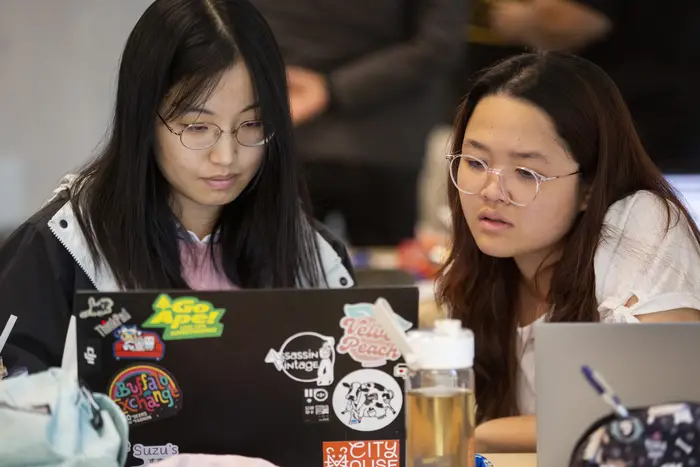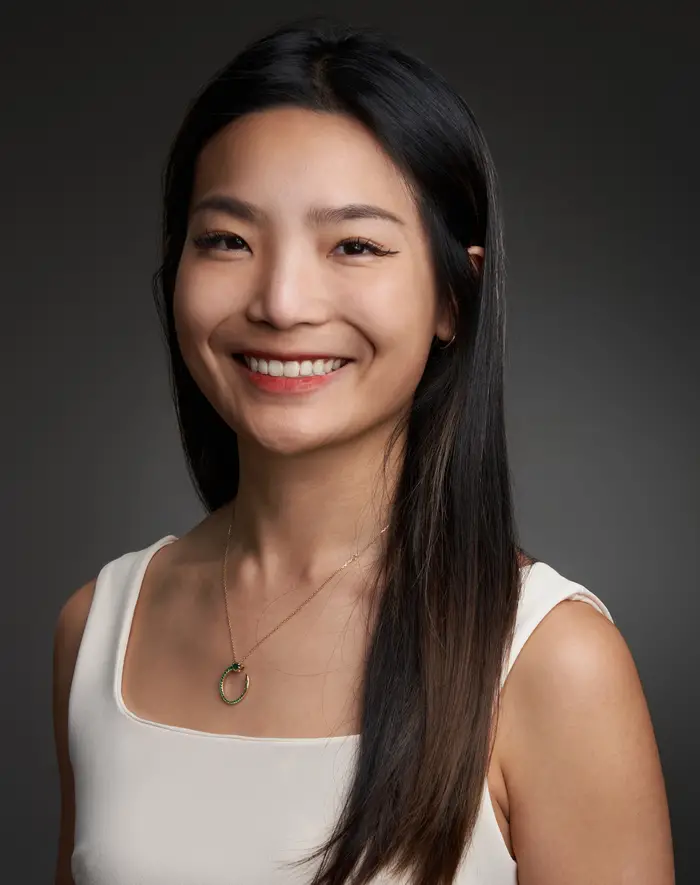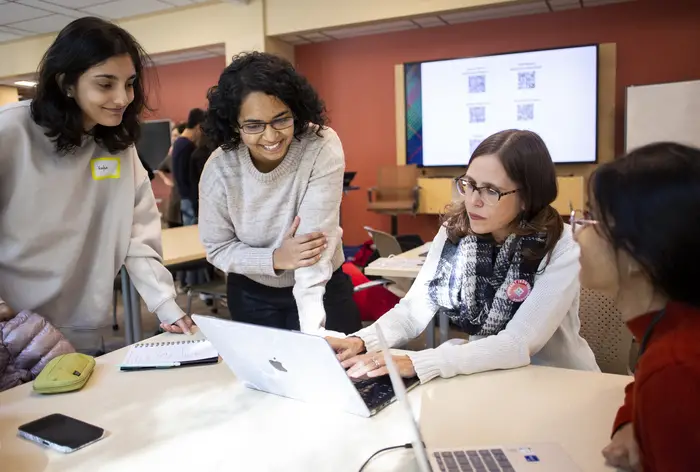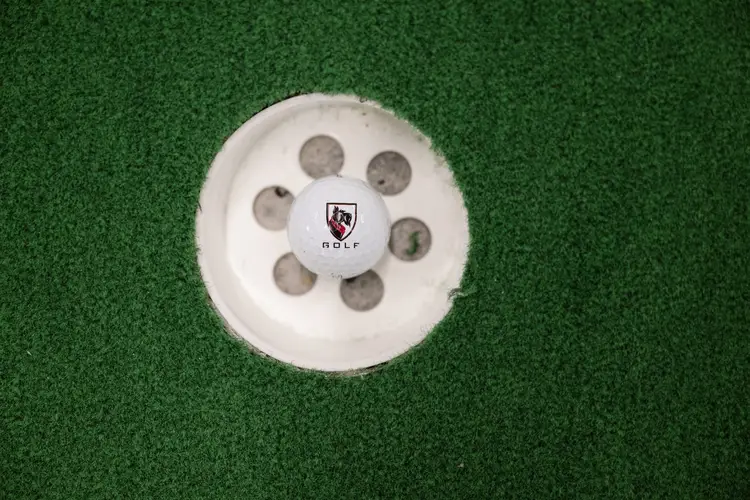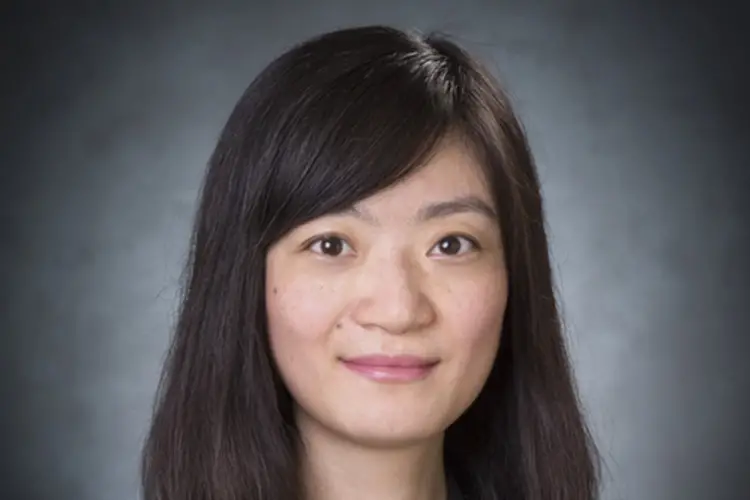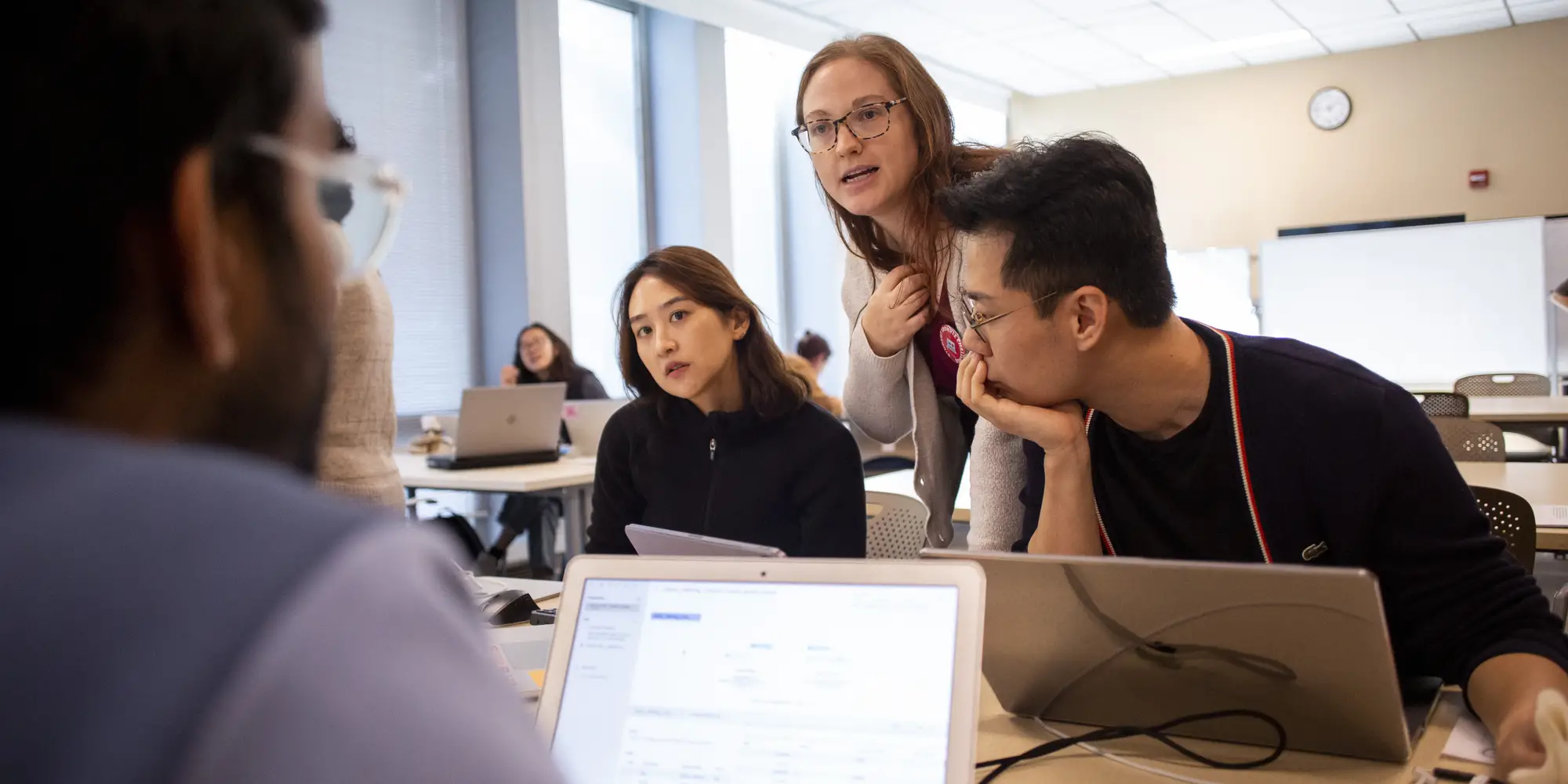
In Inaugural Challenge, Students Find Stories in Snacks Data
Media Inquiries
Donna Zhu texted teammate Hannah Nguyen: “Hannah, we won first!” with five exclamation points when organizers notified participants of results from Carnegie Mellon University’s inaugural Student IronViz Challenge(opens in new window).
“I knew we were competing against really smart CMU students, and even though I was confident in our results, we just didn’t expect it to be first prize, so we were really happy,” Nguyen said.
The pair won for their data visualization, “Brain Food for the Night Owls,” in the competition, out of 32 students that submitted 14 projects after a four-hour hackathon in Hunt Library on Oct. 26. Winners were notified Nov. 18.
“The response from students was really magnificent,” said Emma Slayton(opens in new window), data education librarian with University Libraries, on the competition planning committee. “They really came with their own vision and enthusiasm.”
The competition took about a year to organize, in a joint effort by Carnegie Mellon’s Core Competencies Initiative(opens in new window), University Libraries(opens in new window), Computing Services(opens in new window), Institutional Effectiveness and Planning(opens in new window), and the Division of Student Affairs(opens in new window). The format came from a national competition run by data visualization software company Tableau and was also informed by the success of the university’s IronViz Challenge(opens in new window) for professional staff which has been held for the last two years in conjunction with Data Analytics Day(opens in new window).
Slayton, who devised the challenge’s task, said she wanted to choose something accessible to students, both in subject matter and regarding available datasets. The team found their answer in candy and snacks.
Participants were tasked with helping university leadership better understand candy sales to meet students’ sugar and energy needs, using visualizations that showed insights into trends and correlations with students’ preferences to optimize the offerings year-round on campus.
What story can snacks tell?
Yu Fang, who won first place in the individual category, said she looked at the data to determine the story she wanted to tell with her dashboard.
“I was trying to figure out what question I personally would be interested in, and what other people would be interested in,” she said. “I first started looking at international and domestic sales for candies, but I figured out I might not have had enough data, so I tried to modify the question based on the data I had.”
Fang, a senior studying information systems, heard about the competition in her Building Data Visualizations in to Information Systems class with Shihong Huang(opens in new window), teaching professor of information systems.
“This competition overall, very much aligns with my skill set,” she said. “IS uses technology to figure out business or practical issues, so it was a way for me to bring what I've learned into practice.”
Fang organized her dashboard to highlight the amount spent per person each year on different categories of snacks, such as chocolate or ice cream, then created a module to compare spending over a span of years that can be toggled by the user.
The dashboard showed the need to:
- Increase stock for all of the categories.
- Promote pastry and chocolate since those had the most sales growth over time.
- Deprioritize ice cream because of its lower sales.
- Bundle items or offer discounts to maximize revenue.
“Instead of focusing on having the best analytic techniques or running models, given the time frame, the competition to me was more about telling a story and making sure your dashboard is accessible in a way that people are able to understand, interpret and have some actionable items after reading,” Fang said.
Teamwork leads to first-place effort
Nguyen and Zhu’s infographic first examined how students might benefit from quick, accessible, nutrient-dense nuts, more than candy.
“I’m someone who really cares about nutrition, so I was like, ‘is there any way I can expand this question to other types of snacks instead of just limiting myself to candy?’ ” Nguyen said.
Zhu then used class scheduling data to be able to show which buildings on campus host the most night classes to optimize snacks distribution.
IronViz Winning Teams and Projects
- 1st Place (Team): Team 11 - Brain Food for the Night Owls by Hannah Nguyen & Donna Zhu
- 2nd Place (Team): Team 27 - Sweet Misconceptions by Jan Park, Sungmyeon Park, & Dhruv Tangri
- 3rd Place (Team): Team H - Bite-Sized Joy: Using Candy to Build an Inclusive CMU by Chengyi Cai & Yufei Song
- 1st Place (Individual): Individual G - Optimizing Confectionery Restocking using Forecasted Revenue in the U.S. by Yu Fang
Learn more(opens in new window) about the winners and the competition.
Judges
- Marsha Lovett(opens in new window), vice provost for teaching and learning innovation
- Henry Zheng(opens in new window), vice provost for institutional effectiveness and planning
- Joe Beaman, director of Dining Services
- Gabriela Gongora-Svartzman(opens in new window), assistant teaching professor of information systems in the Heinz College of Information Systems and Public Policy
- Chelsea Leverett-Ptak, core education project coordinator in the Office of the Vice Provost for Teaching and Learning Innovation
- Noah Riley, health promotion program director in the Office of Community Health and Well-Being
- Douglas Stouch, associate director for early engagement and assessment
- Shannon Foster, associate director for institutional research and assessment
- Matt Hoolsema, director of data science and advanced analytics in the Office of Institutional Effectiveness and Planning
Organizers and judges were careful to avoid conflicts of interest. (For example, Gongora-Svartzman asked to be assigned only projects by students whom she had not taught.) Each project was rated independently by a three-member panel of judges with varying technical and subject-matter expertise.
IronViz Planning Committee
- Joanna Dickert, associate dean of student experience assessment in Student Affairs and director of the Core Competencies Initiative
- Josephine Dru, senior data analyst and dashboard developer with Computing Services
- Alexandra Hiniker(opens in new window), director of the Sustainability Initiative
- Matt Hoolsema, director of data science and advanced analytics in the Office of Institutional Effectiveness and Planning
- Chelsea Leverett-Ptak, core education project coordinator in the office of the Vice Provost for Teaching and Learning Innovation
- Alexis Parker, data analytics development manager in Computing Services
- Emma Slayton(opens in new window), data education librarian with University Libraries
“It paid off, where I feel like I belong in this degree program. It’s a nice encouragement for me and for all the women in STEM at CMU: You belong.” — Hannah Nguyen
The pair, who are both second-year master’s degree students in public policy and management(opens in new window), met each other in the Exploratory Data Analysis and Visualization with Python class taught by Gabriela Gongora-Svartzman(opens in new window), assistant teaching professor of information systems.
“Hannah and I complement each other well,” Zhu said. “Hannah is such a good storyteller. I am a person who is focused on the details and I want to have the coolest visualization.”
Nguyen said she was excited to recognize that all three first-place winners were women, especially in a STEM field.
“It paid off, where I feel like I belong in this degree program,” she said. “It’s a nice encouragement for me and for all the women in STEM at CMU: You belong.”
Collaboration and informed future policies
While the students were given required datasets, part of the hackathon included a demonstration on how to use Carnegie Mellon’s Data Analytics Sharing Hub(opens in new window), which houses CMU-specific data and many teams used to their advantage.
“Students thought about making an actual difference,” said Josephine Dru, senior data analyst and dashboard developer with Computing Services, a part of the team who organized the competition. “Multiple teams looked at CMU-specific data to say, here is a data-informed recommendation for our community.”
Matt Hoolsema, director of data science and advanced analytics in the Office of Institutional Effectiveness and Planning who co-sponsored the staff IronViz competition with Alexis Parker, data analytics development manager in Computing Services, said the collaborative effort among all of the CMU offices involved has been several years in the making.
“We've been building the data community of practice(opens in new window) across all the different divisions at the university,” he said. “Events like the IronViz competition, like Data Analytics Day, have helped to create those connections and seen opportunities for collaboration across our different divisions.”
Interdisciplinary efforts such as the IronViz competition and the Core@CMU(opens in new window) class launched this semester are meant to empower students in their own learning at Carnegie Mellon and beyond, said Chelsea Leverett-Ptak, core education project coordinator in the office of the Vice Provost for Teaching and Learning Innovation.
“We're interested in facilitating more events to make it very clear to students that we want to engage with you,” she said. “We want to support students in honing their skills in all of these different collaboration, communication, data, and intercultural and global learning areas.”

